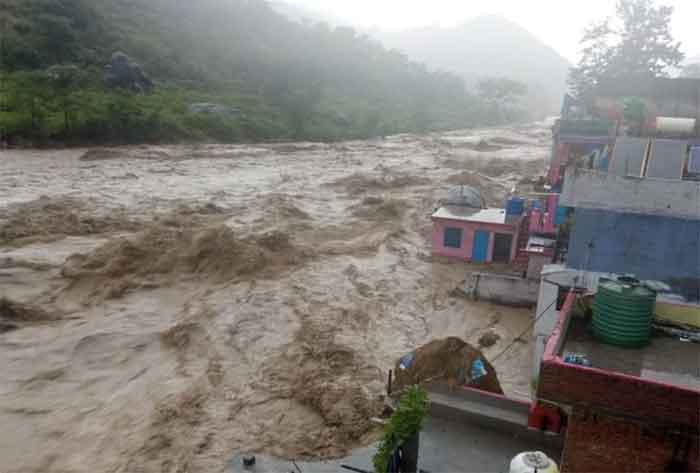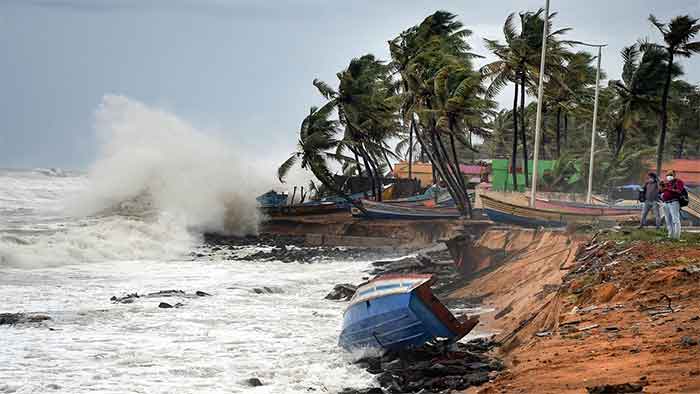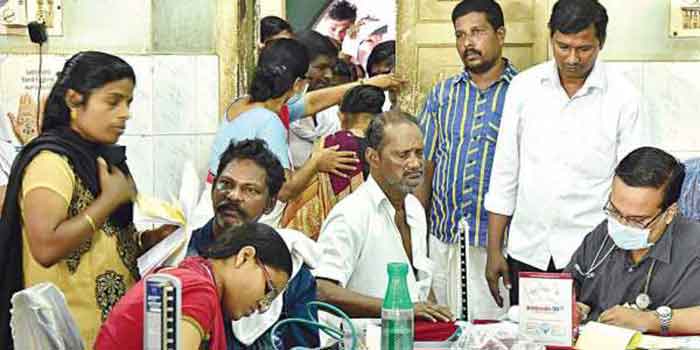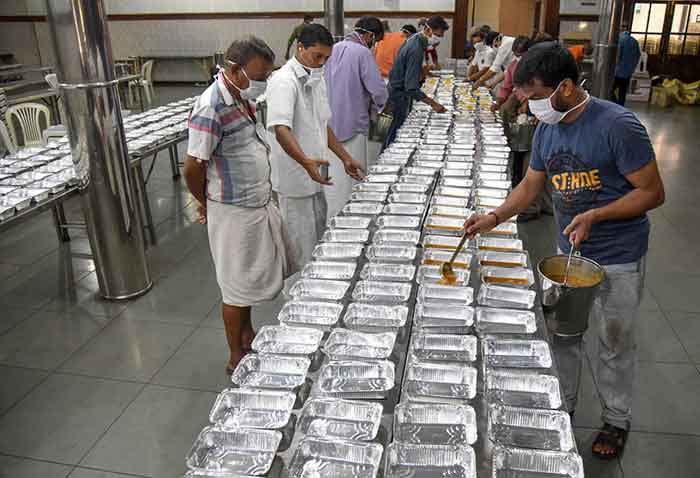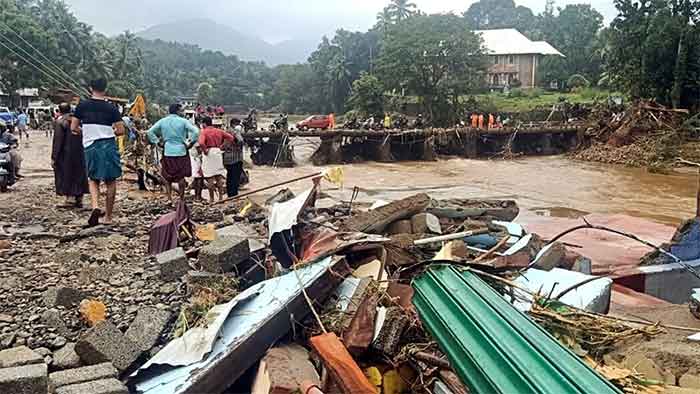
Two of India’s most beautiful regions where thousands of people go to watch and feel the wonders of nature are suffering because of the extremely disastrous rains and floods subsequently. Well, the pain that the rains brought to Kerala and now in Uttarakhand is warning to all of us. It’s nature’s warning to us to mend our ways.
Nobody would have doubted the fury of rains and floods if it were the monsoon season. We all know, India suffers from both heavy rains as well as a shortfall of rains. The monsoon in India this year was more than its forecast and eventually by the middle of September we assumed that the Monsoon was gone , giving happiness to farmers and others.
Unfortunately, whether Monsoon left or not, rains remained there. I was travelling in the high ranges of Uttarakhand and the weather really disappointed us. First, we could not complete our track to Dayara Bugyal which was about 3000 meters above the sea level offering a splendid view of the Himalayas. When we were just short of about 4 kilometer from meeting our summit, heavy rains compelled us to look for a shelter in the dense forest. After two hours when the ferocity of the rains stopped, we decided against climbing up and returned which was more difficult as it was a height at nearly 50-60 degrees slopes. Once we reached our hotel, it rained extremely heavily the entire night. The rains in the Himalayas really frightens you. The rains only stopped in the morning around 7 am and suddenly we saw a bright sun and snow covered peaks. One days later, when we wanted to trek Gomukh from Gangotri which was about 18 kilometers away, we were happy that finally we could see some sunshine but after 9 kilometer’s stressful walking, it started raining and we could cover our first night night journey with great difficulty. It was cloudy and raining, bringing down the temperature heavily. My friends from Mumbai found it extremely difficult to sustain and had breathing difficulties. Next morning when we got up, the situation was not clear and we had made our mind to abandon the trip as reaching back safely was more important even when we knew well that it was difficult terrain to walk in the rains as landslides were common there.
When I had planned my trip after, it was ideal to enjoy the bright sun shine as Uttarakhand looks stunning in the winter when the entire north India suffers with gloomy fog all around, the mountains in the Himalayas glitter in the bright sun making it a fascinating region to enjoy your winters. A couple of days prior to our journey, there was heavy rainfall and a landslide. I thought the worst was over and decided but now the heavy rains, floods and disaster has proved how unpredictable the weather has become today.
It was a rarity when we heard rains and floods together everywhere and not even in the mountains. We know Monsoon starts in mid of May in Kerala when the gates of the holy shrines in Uttarakhand are opened to the public, as that is the best period to visit the hills. People who suffer in the dirty, rotten heat of north India or even in the West or South, visit to Uttarakhand in a very large number. Most of the time July August is the rainy season and by mid-September, Monsoon is officially off but this year it is shocking beyond doubt.
Kerala has lost over 42 persons to these unpredictable rains with towns like Kottayam, Thiruvalla, Idukki, Pathnamthittha facing the biggest jolt of swelling waters in the rivers. Houses collapsed like the cards and car swept away. The dams in Kerala and Tamilnadu are overflowing at the moment and water level is rising high in various districts due to opening up of the gates of these dams. Once we thought the rains were over in Kerala, the met department forecasted heavy rains for Uttarakhand. I was not sure but the next day when we got the information it just reminded us of the terrible tragedy of 2013 which was termed as Himalayan Tsunami killing thousands of people and damaging the huge infrastructure in the state. World saw unprecedented destruction at that time where houses, roads, bridges, vehicles floated and swept away in the furious water of Ganges and numerous other tributaries, some known and various unknown or seasonal. So far, more than 58 lives have been lost, hundreds wounded. Many of the trekkers who had come to enjoy the beauty of the regions are still untraceable. A majority of the roads have caved in and in many places will take time to come back to normalcy.
Tsunami occurred in 2004 while Uttarakhand’s tragedy happened in 2013 but it looks that our governments learnt very little from that. The magnitude of the devastation did not affect any change in the policies pursued by the government as well as the bureaucracy. It is clear that Climate crisis is an issue which has been ignored. In the name of ‘development’ our mountains, rivers, seas are under the assault of greedy companies and political leaders as well as governments who have become their ‘agents’.
Kerala is a beautiful state but ‘development’ has reached there with growing urbanisation and ‘cemented infrastructure’ to meet the demand for the growing population which was growing enormously. Urban population which was merely about 15% in 1971 was now crossing nearly 50%. Moreover, the heavy migration for jobs to the Middle east result in ‘idea’ of ‘development’ by the individuals in the form of houses which are never according to local environment and needs but as per fancies seen elsewhere. Rampant mining to satisfy the need of the urban population particularly for sands and stones has aggravated the crisis. Deforestation to pave the way for ‘industrialisation’ and annexation of the sea beaches to attract ‘tourists’ and their demands are ultimately paving the way towards bigger disaster. There are about 58 big or small dams in Kerala and one is certain that many of them are in important ecologically sensitive zones. For the first time we heard that many of these dams were running beyond their capacity this time. The fact is that the reason for floods in many areas in India are these overflowing dams which suddenly open up their gates for the waters resulting in massive flooding everywhere. Indian experts will have to think it over now as to how long this will be allowed. Whether Maharashtra, Rajasthan, Karnataka, Tamilnadu, we have seen such things happening every year damaging property, crops and human lives. It is time to focus on these things in the beginning so that human lives are not lost because of human errors.
Look at what is happening in Uttarakhand. It is destruction. The greedy business lobby wanted to destroy the sea coast, backwater system, small rivers for mining, in Uttarakhand they wanted to reach the ‘top’ to ‘promote’ tourism and for that they have no shame in destroying our basic identity, the mountains. The Chardham yatra project added with bringing railway network to high hills are invitation to disaster. Nobody denies that we should have good road infrastructure but it is important how and whether the destruction that we are causing to nature is bigger or not. It pained me to see how the mountains were being drilled by the big machines and concrete was replacing the natural forests. We can not have four lane roads in the Himalayan region unless we destroy the entire ecological system. If we destroy that, how much damage it could create to the entire northern and Eastern India will be unheard of.
Dams need to be damned. Unlike Kerala, hills of Uttarakhand have shown a negative growth rate in Population. Hundreds of villages have no habitat as people migrate. The winters bring chills and many villagers move to other regions during the winter. It’s a kind of nomadism when people migrate to other towns or villages from Middle of October till February- March end when the entire Himalayan region is covered with deep and dense snow. Forest cover is much higher which is controlled by the government. Many villages don’t even have public utility places as they have to seek permission from the forest yet big resorts have come in. You can see Big resorts in Jim Corbet National park which is actually in the Tarai region ( Himalayan plains) but elsewhere too in the higher ranges above 3500 meters. It is this lobby of ‘environmentalists’ who make the local people look like enemies and project themselves as ‘champions’ of environmentalism. Frankly, it is this lobby, which has damaged the cause of the nature.
Laws must ensure local cultures, communities and ecological issues are protected and respected
The problem that has created this huge crisis is the absolute disregard and inability of the Indian states to respect people and their knowledge which is often regarded as ‘localised’ hence ‘experts’ are brought in and they legitimise the political propaganda of the power elite in their effort to create a ‘homogeneity’ among us. The fact of the matter is that all ‘developmental’ projects have ‘ideas’ and ‘experts’ emerging from private companies sitting in big metropolitan cities whose major work is ‘lobbying’ with the politicians, ministers and political parties to get through their work. Most of them have least concern for local sentiments or environmental protection or what is essentially known as Free Prior Informed Consent which is an international practice whenever there is a developmental project planned in an area of greater environmental concern as well as indigenous communities. World over, the rights of people are respected and it is assumed that local communities are the best bet to protect the environment but back home the contractors in big cities with political connections and ‘experts’ funded by the Industrial houses have used judiciary for their purposes where ‘ local communities’ are perceived as ‘threat’ to environment.
Hailing from the hills, I consider them my identity. I have often said whenever a friend wishes to visit that you find huge palaces, big buildings, historical spaces like those in Mumbai, Kolkata, Delhi, Lucknow, Mysore, Chennai etc in the hills. If you are coming to hills, you will only find glacial rivers, fountains, mountains and other natural thing and they are not ‘resources’ for us but our basic identity. If there is no ‘pahad’ then there can not be any Pahadi/Pahari which is our identity. If the mountains are destroyed, we will have to pay a heavy price and we will ultimately eliminate our identity.
Even when I am a humanist, I live with different rivers in the hills. Listen to their songs, if you have the capacity to understand the soulful humming and observe their ferocity at places, the power, the serenity and intensity unparalleled. They are a treat to watch. Enjoy the sublime, pure water and how it is playing but what have we done to them? We have tried to control them. How many dam(ns) are being built on various rivers in Uttarakhand which ultimately gave us Ganga, the most fertile and revered river of the country. A journey from Rishikesh or Dehradun to both the Gangotri, Yamunotri as well as Badrinath-Kedarnath would give you visibility to how mercilessly we have betrayed the mountains as well as our beautiful, adorable and revered rivers. This is nothing but a brutal assault on the greatest gift of nature to India. We live in a strange society at the moment where in the name of ‘respect’ we pollute our rivers and mountains but remain quiet on the issue of their destruction.
The nature’s wrath at Kerala and Uttarakhand have send a categorical warning. You call both the states ‘Gods own country’ and ‘Devbhumi’. For me, both of them are the finest creation of nature to enjoy. The beauty of Arabian sea and stunning greenery of mountains in Munnar, the loving backwaters at Kumarkom and many more places are nature’s creation now being destroyed by greedy humans. Just travel to Uttarakhand and you will get fascinated with the beauty of Ganges and the more upward you move, the beautiful snowy rivers with the pristine water and humming attract you. The snow-covered peaks of Himalayas which literally protect India from its mighty neighbour is our best defence. There are lakes, meadows, fountains and what not but what happens is that human greed and comfort create infrastructure that hurts nature.
We all know that global warming is a reality. Climate change is a reality. So far, our governments, political parties and politicians have no time fighting with their pitching one person against others. Our divisive agenda has already hurt India and its ideas. The developmental model that is being pursued is purely to provide contracts to those who are close to those in power. Unfortunately, the power center of the ruling party has not been able to come out of its Gujarat obsession. It is trying to create a Gujarati monopoly everywhere which is dangerous and detrimental. Look at the contractors, airports, big ports, telephone companies, internet services and find out who the people are. What is the diversity in them? For these ‘versatile’ geniuses, profit is everything even if it has devastated humanity.
We shout that from the Himalayas to Arabian Sea, India is one but here I want to say, from the Himalayas to the Arabian sea, we must not underestimate the warning signals from nature. Whether it is the mountains, rivers or sea, nature is sending an emphatic message for all of us to mend our ways or face the devastation. It is time, political parties, activists, and the government to give serious thought. Local municipal bodies, state governments, must act and develop local models in terms of structures and development. We can’t see a beautiful and adorable city like Nainital suffering in flood or the devastating videos that emerged from Kottayam. We need to protect our heritage which emerges from nature. Respect nature, learn to live with it, respect local communities that protect nature and live a natural life and stand up against those who come to you with their ‘profitable’ ‘developmental’ mantra. Nobody should be allowed to exploit nature for private profit. There must be an eco-audit of our schemes and programmes so that we know what is happening on the ground and what are the threats to our nature and biodiversity. It is time for all of us to stand up and be counted. We can not allow our lonely planet to be destroyed by the ‘developmental mafia’. Wake up call for all. We hope both people of Kerala and Uttarakhand will stand up for protecting their natural identity and make environmental-ecological issues a prominent political agenda. Time has come to question the ‘developmental’ model to save our fascinating and enchanting natural heritage.
Vidya Bhushan Rawat is a social activist. Twitter @freetohumanity


